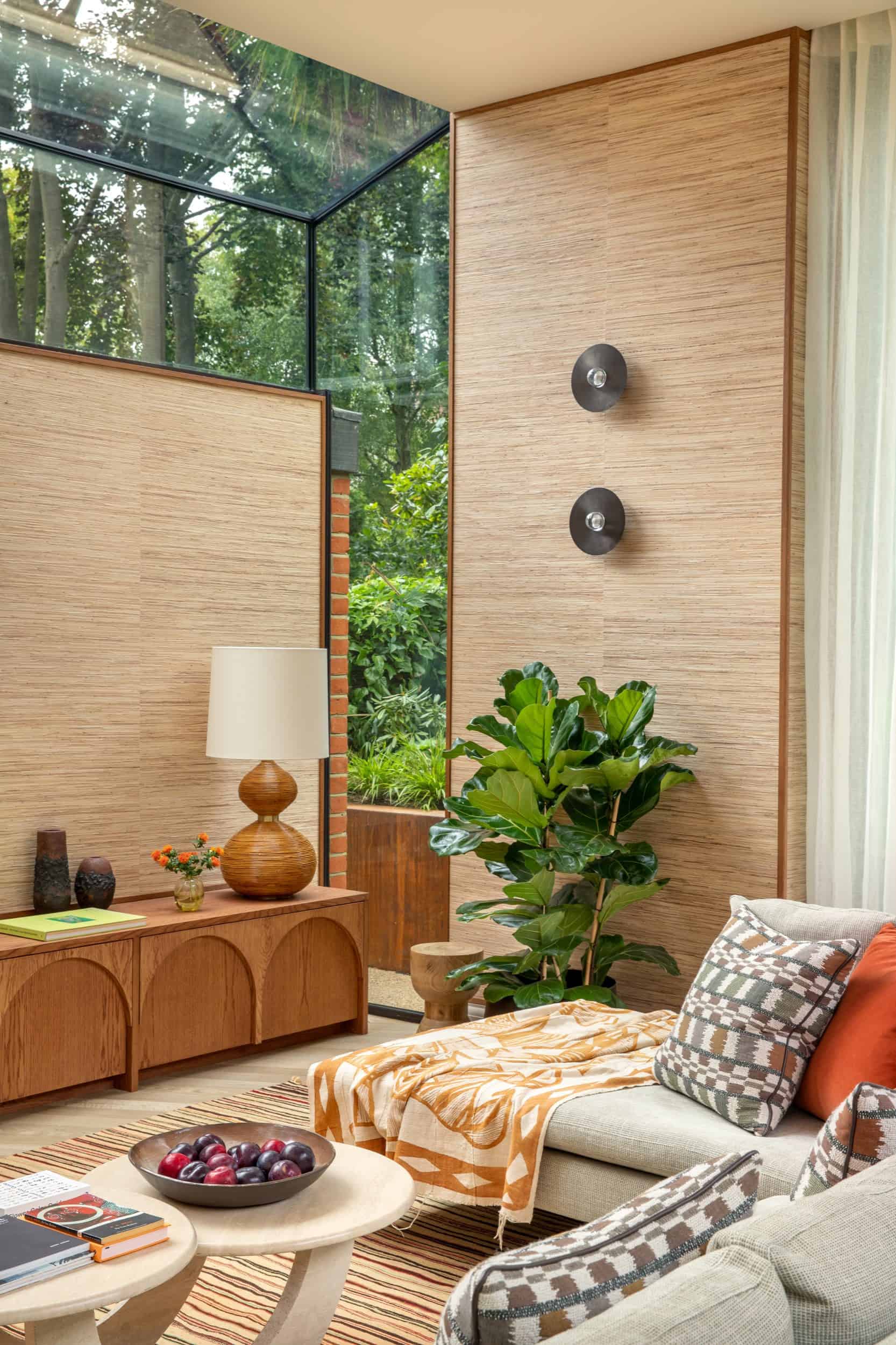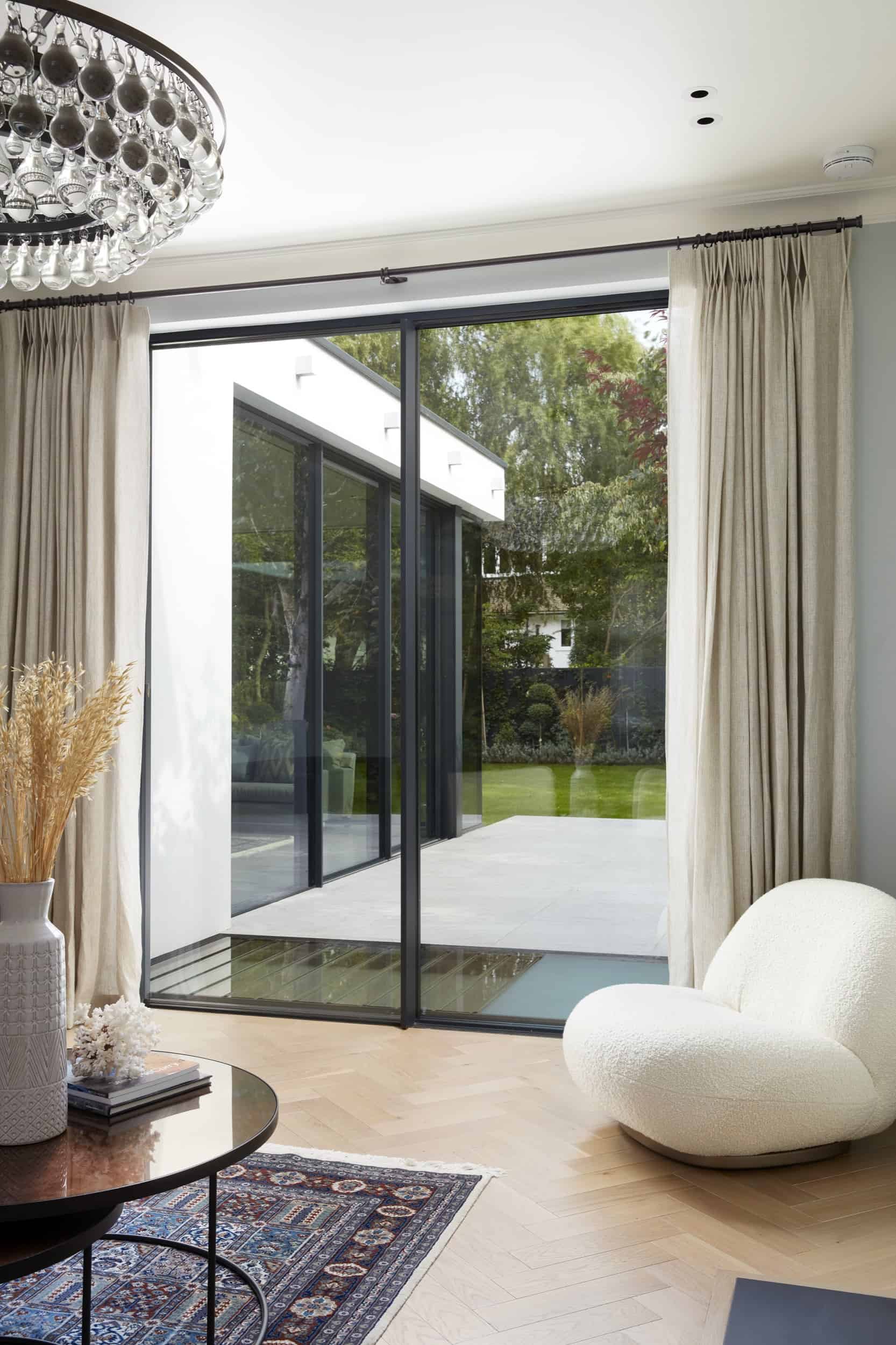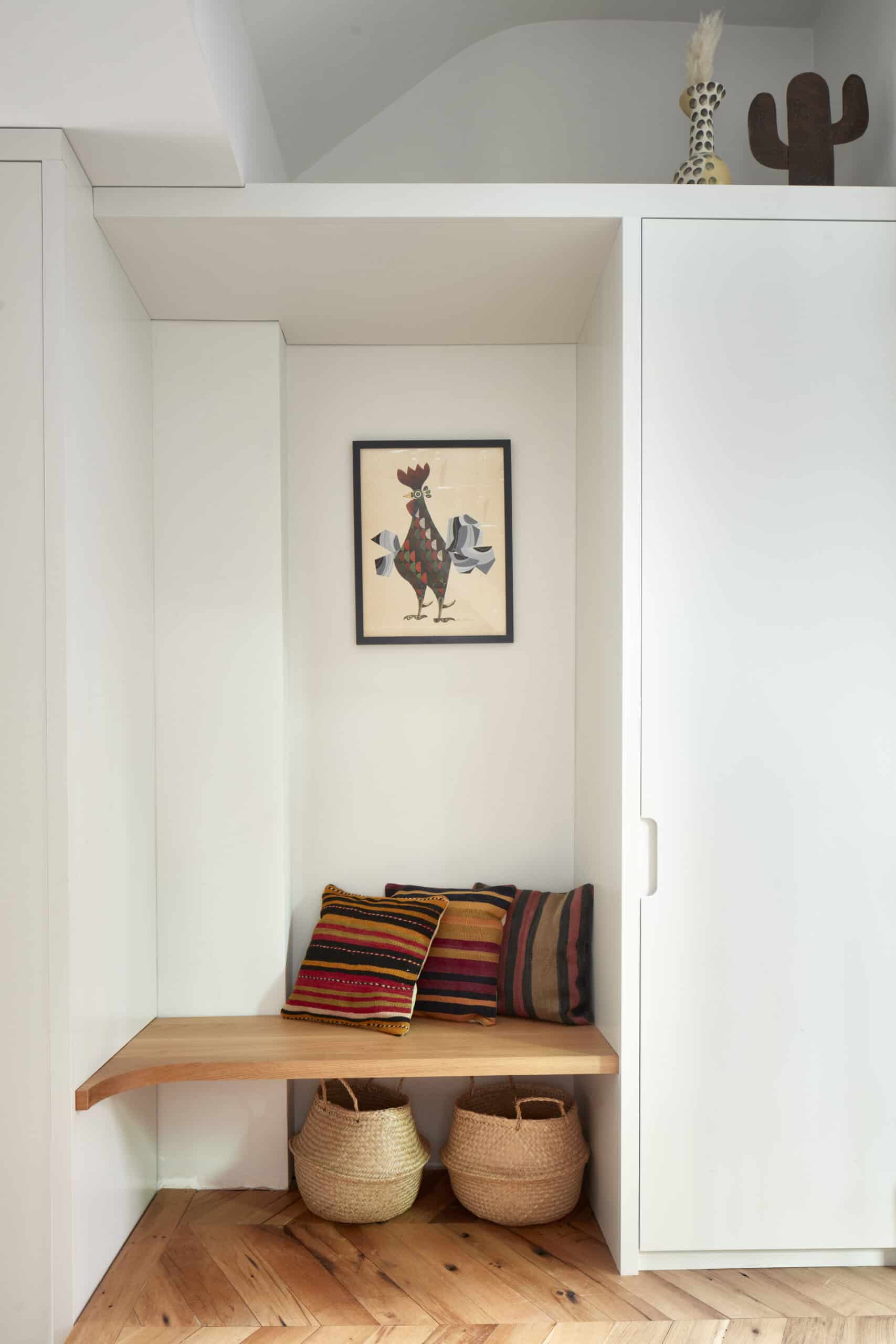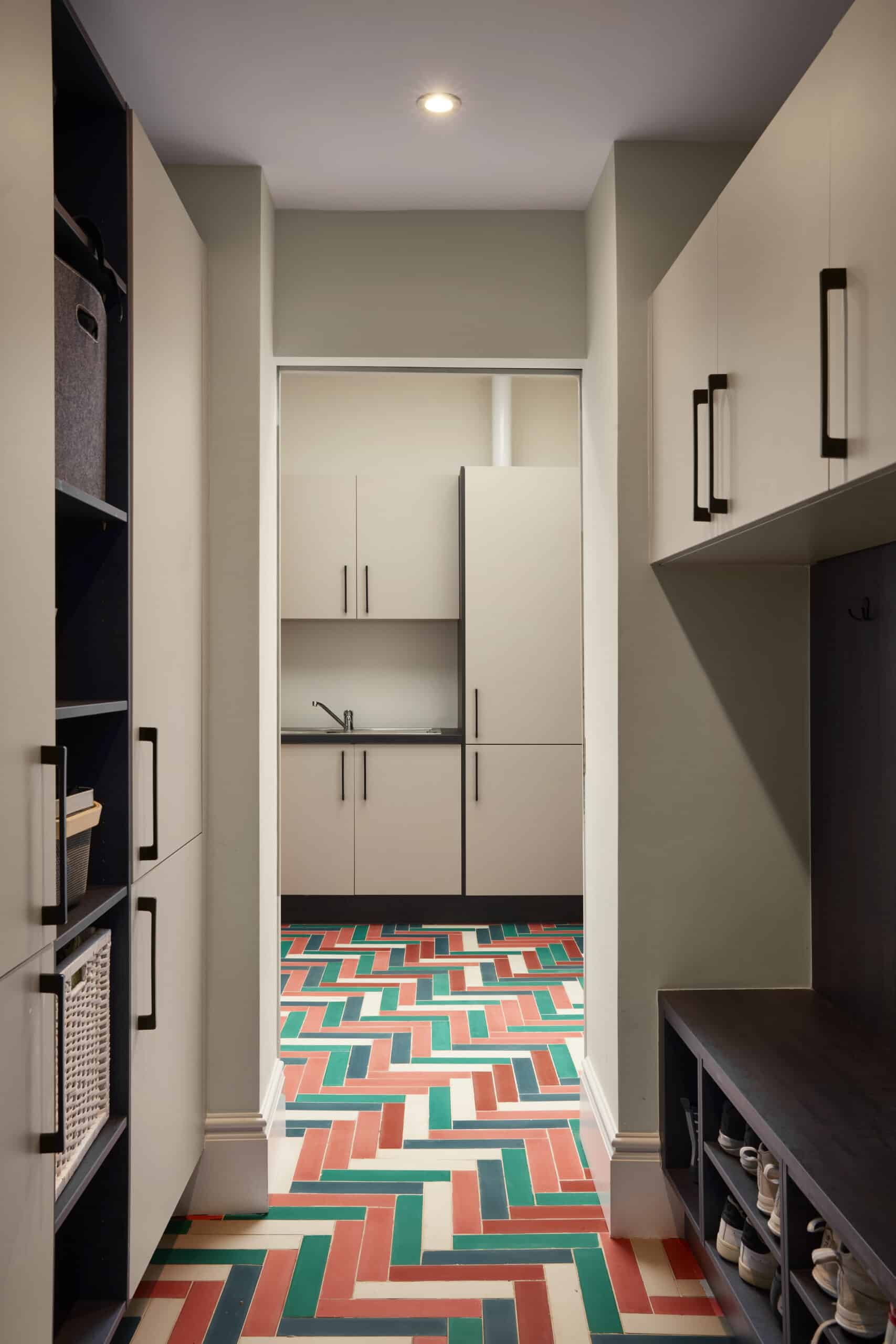‘Flow’ is often seen as the critical element in the success of a building. But what does flow mean specifically, and how does it work practically? In this article, we uncover ways to maximise the perception of space in your home with pointers on how to improve visibility, navigation, acoustics and lighting. As with all neuroarchitecture principles, getting the flow right can have a profound impact on your wellbeing and quality of life.
From ease of navigation to the way light enters a room, the flow of space is critical to how a home looks and feels. A visual interconnection between areas can help deliver a sense of a larger, more open space – while architectural acoustics can have a significant impact on perception and wellbeing, helping deliver optimum noise control.
However, while open-feeling, acoustically-sound rooms can provide a calming and relaxed effect, striking a balance between open and protected spaces is key. This is why designing spaces for specific functions is crucial within flow design architecture principles, with stair, corridor and window placement playing an important role.
Ensuring that your chosen architects design with sound in mind is also crucial. Whether via materials, surfaces, or sound-absorbing/reflecting elements, the distribution and control of noise plays a major role within neuroarchitecture.
.webp?width=2048&height=1405&name=xMClayton_2303-2-XUL-GOL_003-2048x1405.jpg.pagespeed.ic.TaDsXGR3wu%20(1).webp)
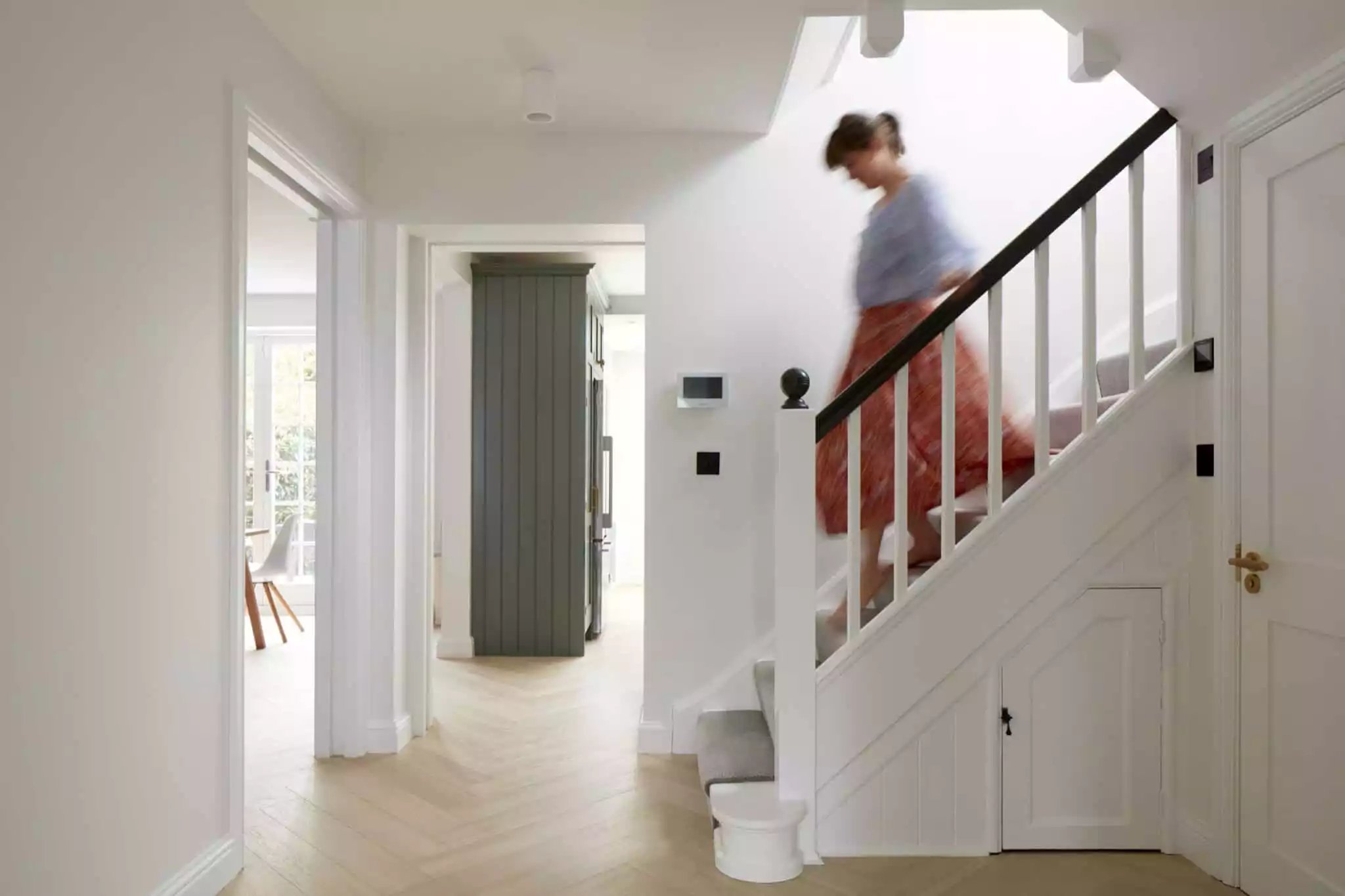
"Transparent partitions, strategic pathways, and visual landmarks are essential elements that create functional, aesthetically pleasing spaces, fostering a sense of place and ease of navigation"
Maia Lemlij
Flow-enhancing benefits of architectural acoustics
Now we’ve established the key ingredients of ‘flow’, let’s delve into the evidence behind this principle. How can the ‘flow’ of buildings impact our cognitive performance and wellbeing?
A 2013 whitepaper demonstrates that, via research into noise levels in a classroom, 5.5 points are lost on national standardised tests for every 10dB noise increase above 41dB. This clearly highlights the detrimental effects a lack of noise control can have on our cognitive function.
Research has also consistently found that the optimal room shape for acoustics follows a specific ‘golden ratio’. This is 8 feet high, 12.8 feet wide and 18.64 feet long. These measurements have informed architects for centuries, providing a clear blueprint for how to optimise the flow of buildings.
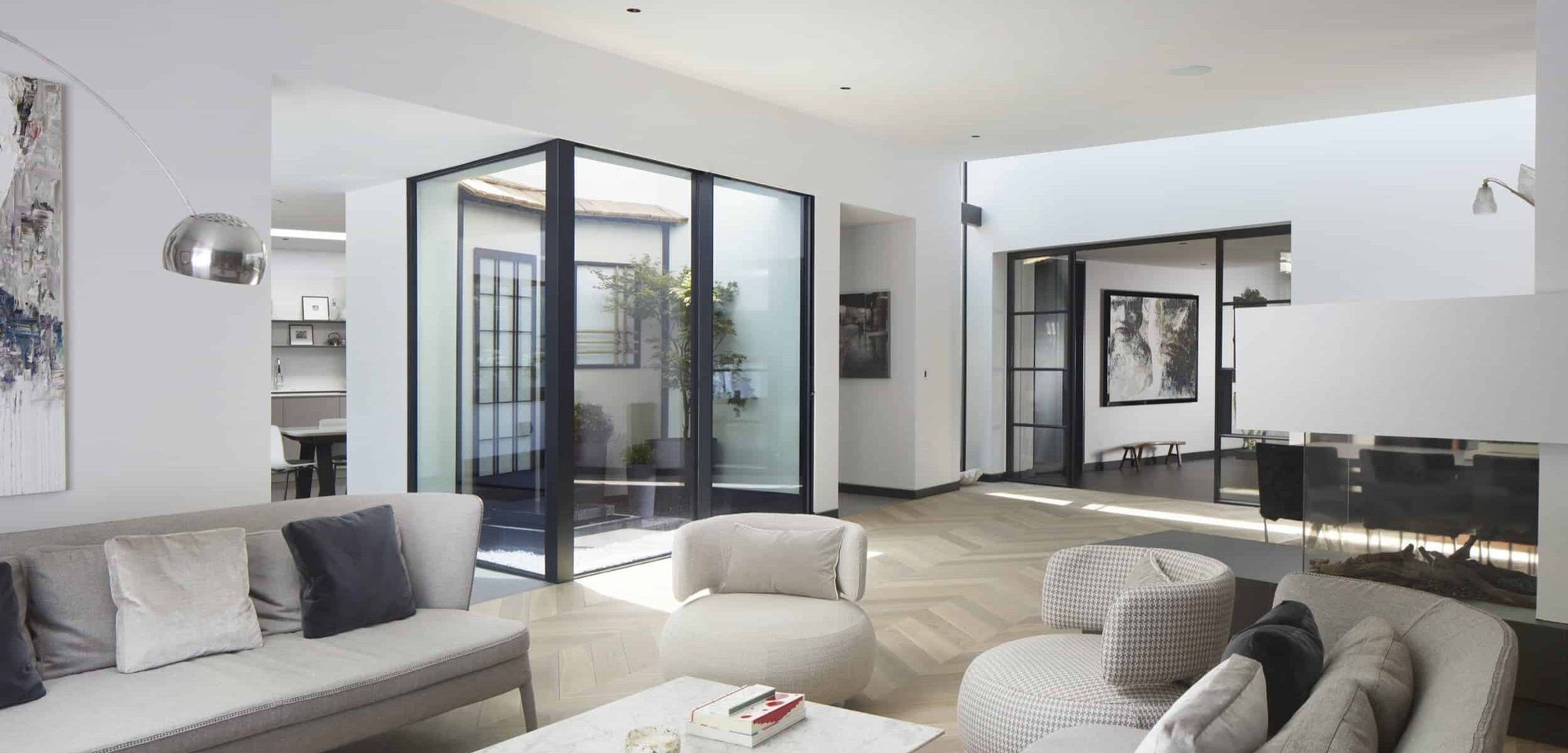
Techniques to maximise the flow and perception of space at home
Here are a few key ways you can enhance your home’s visual and acoustic flow. ;
Prospect: Bringing the outside in
Placing windows in strategic locations can help the brain to decompress and better survey the surrounding environment. Installing large windows or skylights will dramatically increase views of the outdoors, delivering a greater presence of depth and connection to greenery and nature when you enter the space.
It’s no secret how biophilic design principles can enhance feelings of relaxation and wellbeing. Therefore, bringing the outside in and maximising the ingress of light significantly contributes to the overall flow of a space. Interconnecting these neuroarchitecture principles heavily contributes to how well an environment flows, meaning a multi-faceted approach to home design is crucial.
Examples of XUL utilising views of nature to improve space perception can be found here:
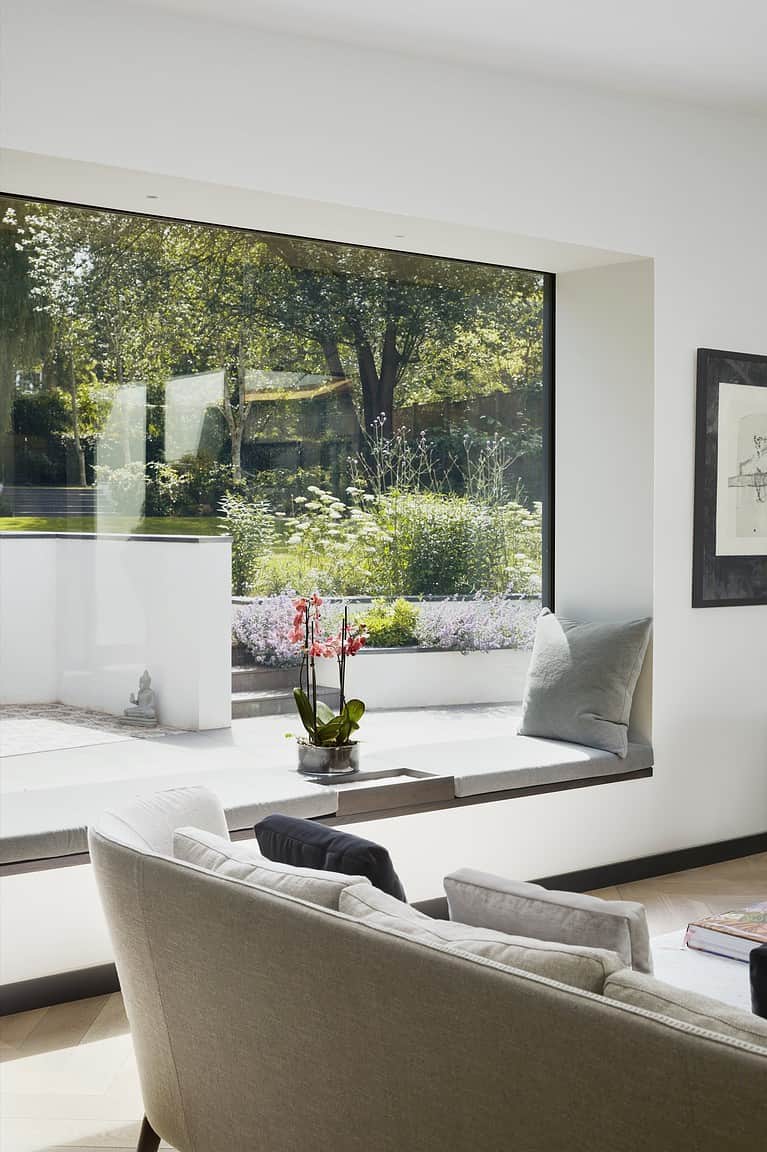
Refuge: Spaces to retreat
While open plan spaces are often sought after, it’s important to design with different aspects of life in mind. Sometimes, the buzz of an open plan environment is preferable but, at other times, quieter places to work, relax and regulate are necessary. Without incorporating such spaces within your home, overall flow and perception could feel overwhelming with too much sensory stimulation – potentially triggering negative emotional responses. Social spaces, even within open plan designs, can still foster quieter, cosier feelings with soft geometry and rounded furniture.
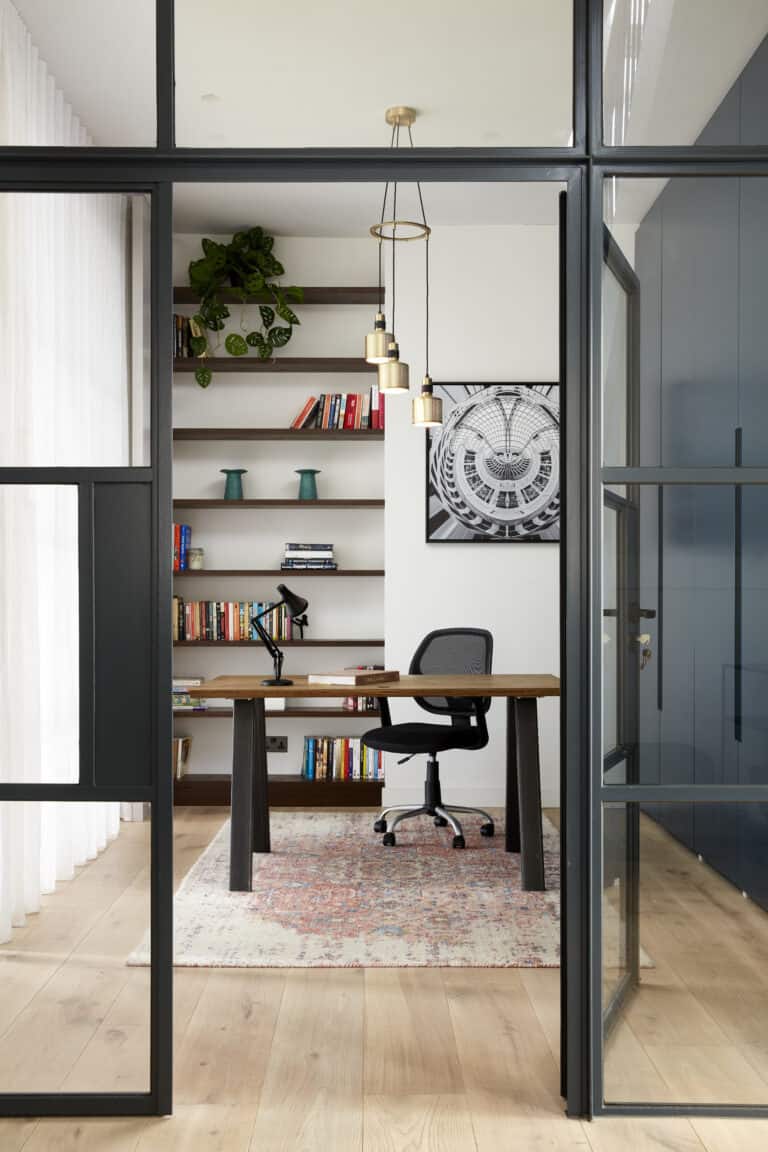
Designing for daily routines
Achieving optimum flow means incorporating more than visual and auditory elements; daily routines must also be taken into account.
Ensuring items like your coat, wallet and keys have a safe space to be stored upon entering your home will add seamless ease to your routine. Important items will be within easy reach every time you get ready to leave, enhancing not only the flow of your space – but your daily life too.
This also plays into the principle of attentional capacity. That is, if we don’t have to utilise too much attention in finding items and getting ready, we’ll have a greater capacity to focus throughout the day ahead.
Sensitive acoustic design
Your chosen architect should always consider potential sensitivities to noise. Whether you prefer the hustle and bustle of a busy home or find yourself seeking quieter environments, capturing your acoustic preferences within your home is crucial to enhance the overall ‘flow’ and enjoyment of your living space.
It’s equally important to prioritise specific sounds we are particularly drawn to, as opposed to solely focusing on noises you wish to avoid. Allowing for natural sounds to be heard within your home, such as birds, fluttering leaves and flowing water, can help enhance relaxation and manage stress.




